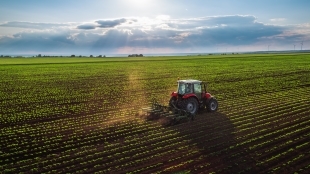
Equipment
Safety
Cultivating safety technology in the agriculture sector
October 15, 2019 By Brigade Electronics
 Cultivating safety technology in the agriculture sector. Brigade Electronics
Cultivating safety technology in the agriculture sector. Brigade ElectronicsAgriculture is a hugely diverse industry with a host of challenges. In a competitive market, farmers are under increasing pressure to improve productivity and profit. However, striking a balance between this and safety is crucial to protect workers and prevent workplace fatalities.
In Canada, agriculture is the third most hazardous industry. Incidents involving machinery account for more than 70 per cent of fatalities in the sector. Between 2003 and 2012, there were 843 agriculture-related fatalities in Canada. More than 17 per cent of these were runovers.
If a serious accident occurs, any productivity gains could be lost, with farmers facing stress, lost time, insurance claims and even prosecution.
Hazards to workers from tractors and other farm machinery can be caused by various factors. Design of modern machinery has led to significant performance improvements, but the nature and size of these machines mean operator visibility can often be impaired.
Blind spots are a huge contributory factor in many incidents involving agricultural machinery. The shape, size, and elevated operator positions all limit the field of vision for an operator making it difficult to spot objects or people in the immediate vicinity. Technology is helping to solve these issues by eliminating blind spots on machinery and assisting operators working in difficult conditions when visibility can be compromised, such as overnight or in bad weather.
Commercial vehicle safety systems can give drivers better visibility as they maneuver their vehicles by providing the driver with a complete surround view of the vehicle in real time in a single image.
A 360-degree camera system, such as Brigade’s Backeye360, combines images from ultra-wide-angle cameras, resulting in a ‘bird’s-eye view’ of the vehicle and surrounding area.
Research has shown that in the time it takes to scan four mirrors, assess and then react to hazards, a vehicle could travel as far as 33 feet. Vehicle camera safety systems protect the driver and ground workers in the vicinity of the vehicle.
Radar obstacle detection technology is further enhances safety. It alerts drivers to potential risks and works by emitting a frequency-modulated continuous-wave radar that is faster than pulsed-radar products.
Some detection systems can produce false alerts, which can lead to frustration for drivers, resulting in genuine alerts being disregarded. Continuous-wave radar protects against false alerts, thanks to the controlled beam pattern, which can be programmed, allowing organizations to fix a custom detection area specifically suited to their needs. When a moving or stationary object is detected, the driver is alerted via an in-cab visual display and an audible warning.
Heavy duty radar systems operate in high or low temperatures and are waterproof against powerful and high temperature water jets. They are also dust resistant and can be easily heard in noisy environments. The display can either be integrated with the camera system screen or provided as a standalone waterproof and dustproof display.
While technology is a key part of helping prevent injuries and deaths, simply installing safety systems doesn’t mean an operator’s safety obligations have been met. It is also essential for the industry to be fully committed to improving and implementing robust safety strategies so that demonstrable progress can be made, and fatalities and serious injuries can be prevented.
Print this page